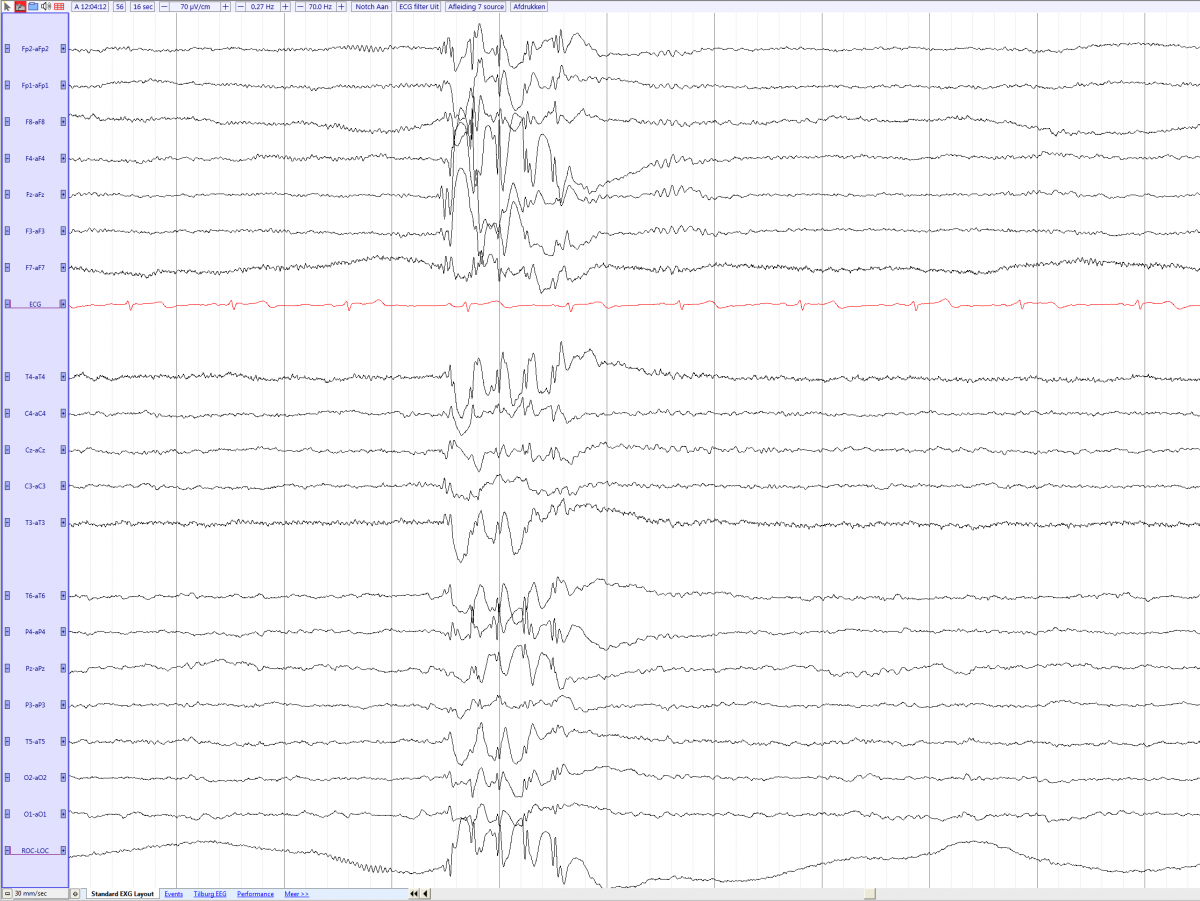Benign Myoclonic Epilepsy in Infancy
From EEGpedia
Contents
Background
- One of the idiopathic generalized epilepsies
- 1% to 2% of epilepsies that start before the age of 3 years
- Seizures start between 0.5 and 3 years of age in developmentally normal children. However, some cases have a later onset up to 4 years
- A family history of febrile seizures and epilepsy is often reported
- Remission usually occurs within 1 year (6 months to 5 years) from onset.
- The outcome is generally benign. In rare cases, myoclonic epilepsy such as Juvenile Myoclonic Epilepsy may follow Benign Myoclonic Epilepsy in Infancy
Clinic
- Myoclonic jerks involving mostly the upper part of the body, singular or clusters
- Consciousness is normally intact
- Photosensitivity in 20% of the patients
- Unexpected acoustic or tactile stimuli can elicit a the myoclonic jerks in 10%.
Treatment
- valproic acid was effective in 23 of 30 treated patients [1]
- Patients with acoustic and somatosensory evoked myoclonic seizures may not need treatment.
EEG
- Inter-ictal: Sometimes generalized Spike slow wave complex or Polyspikes slow wave complex
- Ictal: Brief generalized Spike slow wave complex or Polyspikes slow wave complex
- During sleep in most of the patients the myoclonic seizures persists
- Sometimes photosensitivity
- Normal background rhythm
- Electromyogram show one or repetitive myoclonia
Generalized (poly)spike slow wave in a 15 year old male with JME (source)
Notes
- ↑ Auvin, S. , Pandit, F. , De Bellecize, J. , Badinand, N. , Isnard, H. , Motte, J. , Villeneuve, N. , Lamblin, M. , Vallée, L. and , (2006), Benign Myoclonic Epilepsy in Infants: Electroclinical Features and Long‐term Follow‐up of 34 Patients. Epilepsia, 47: 387-393. doi:10.1111/j.1528-1167.2006.00433.x
